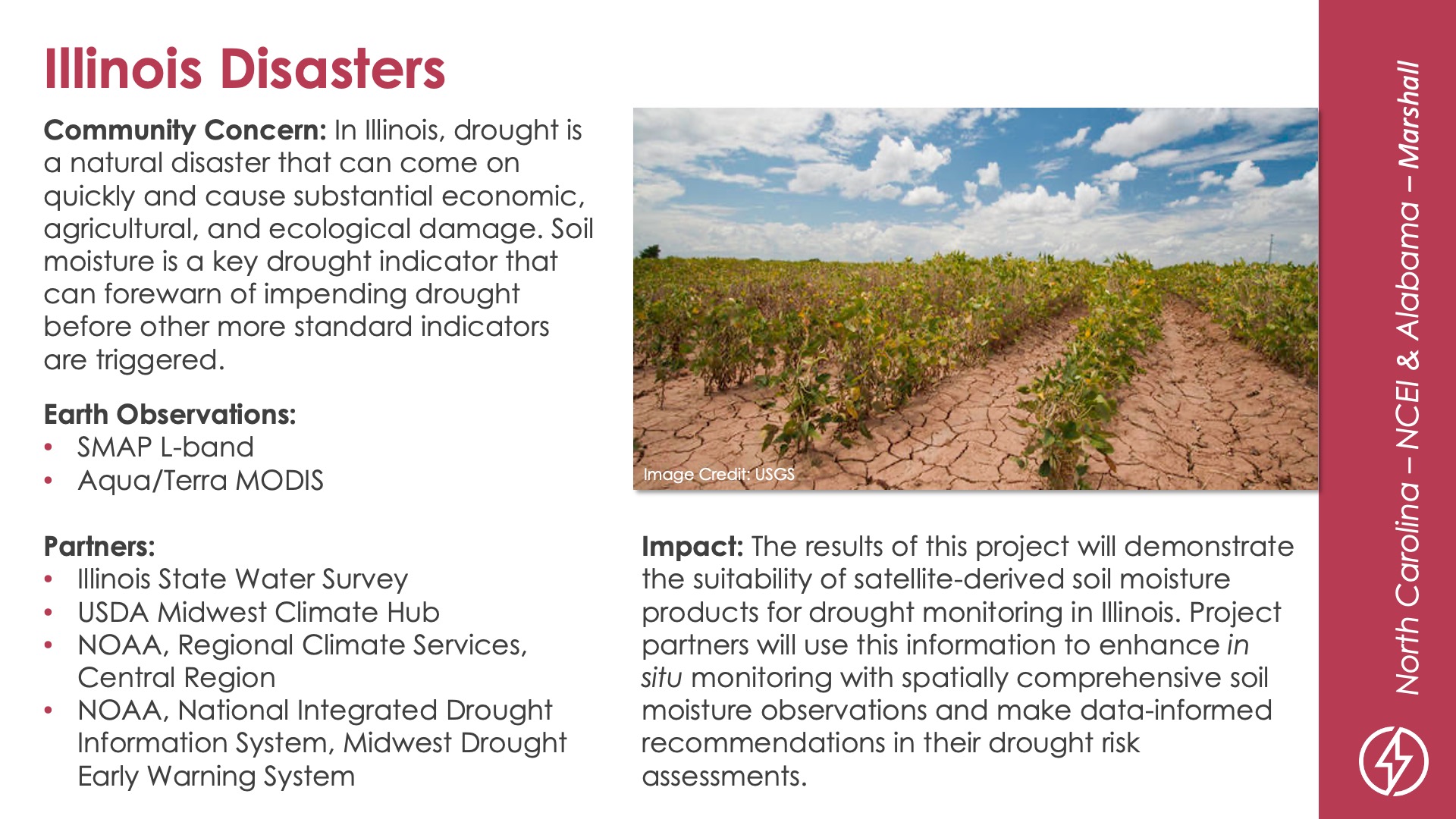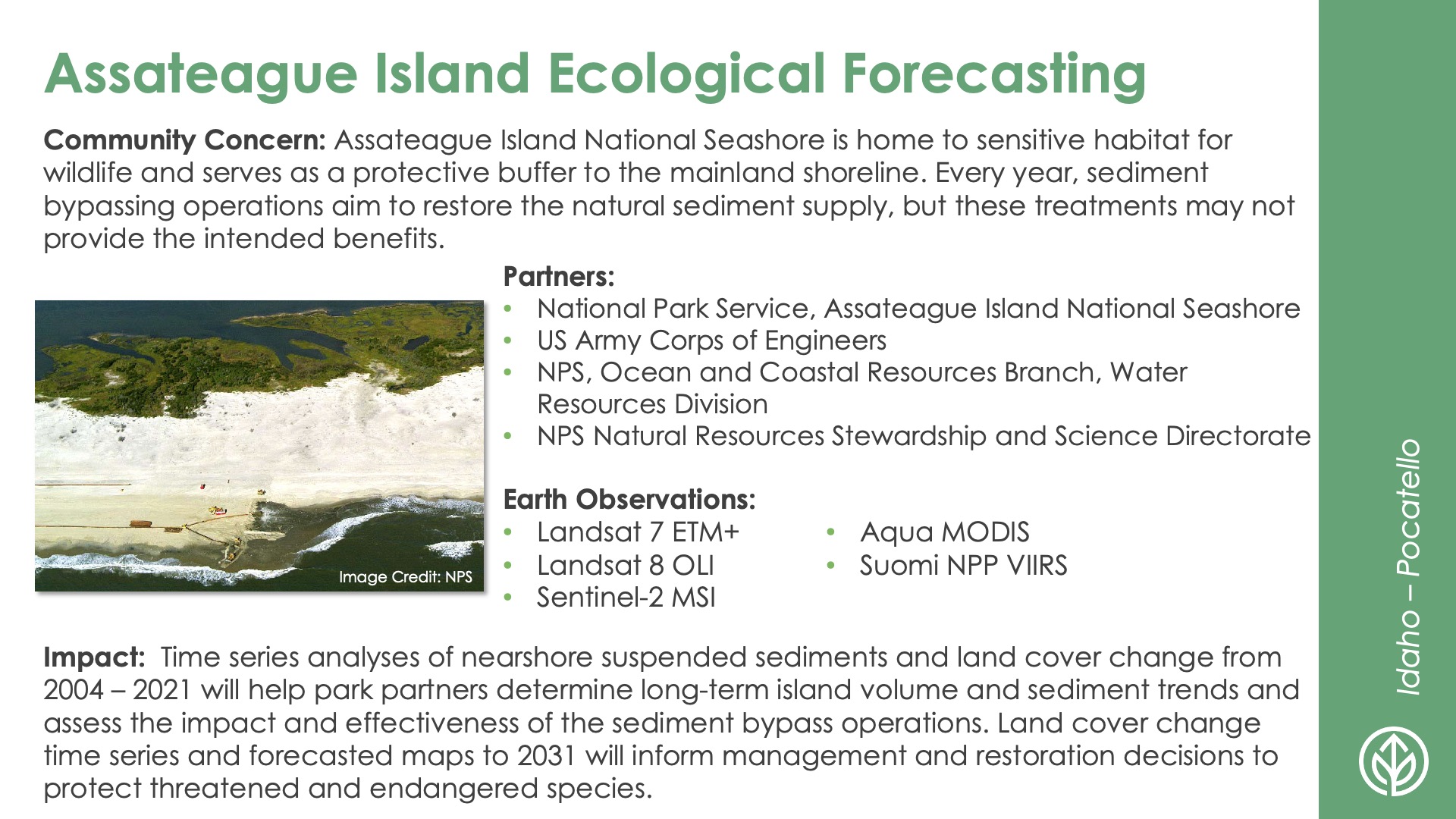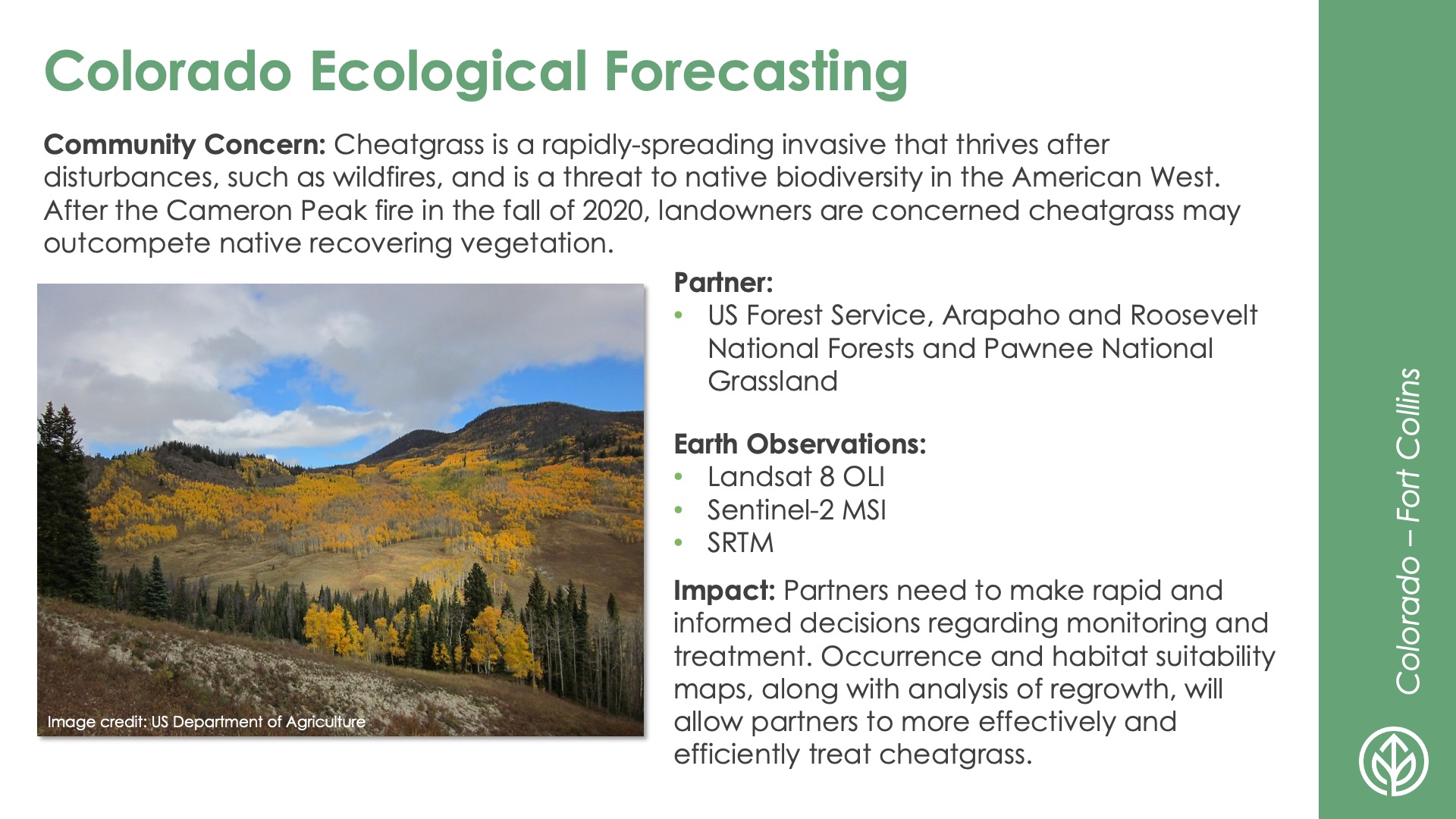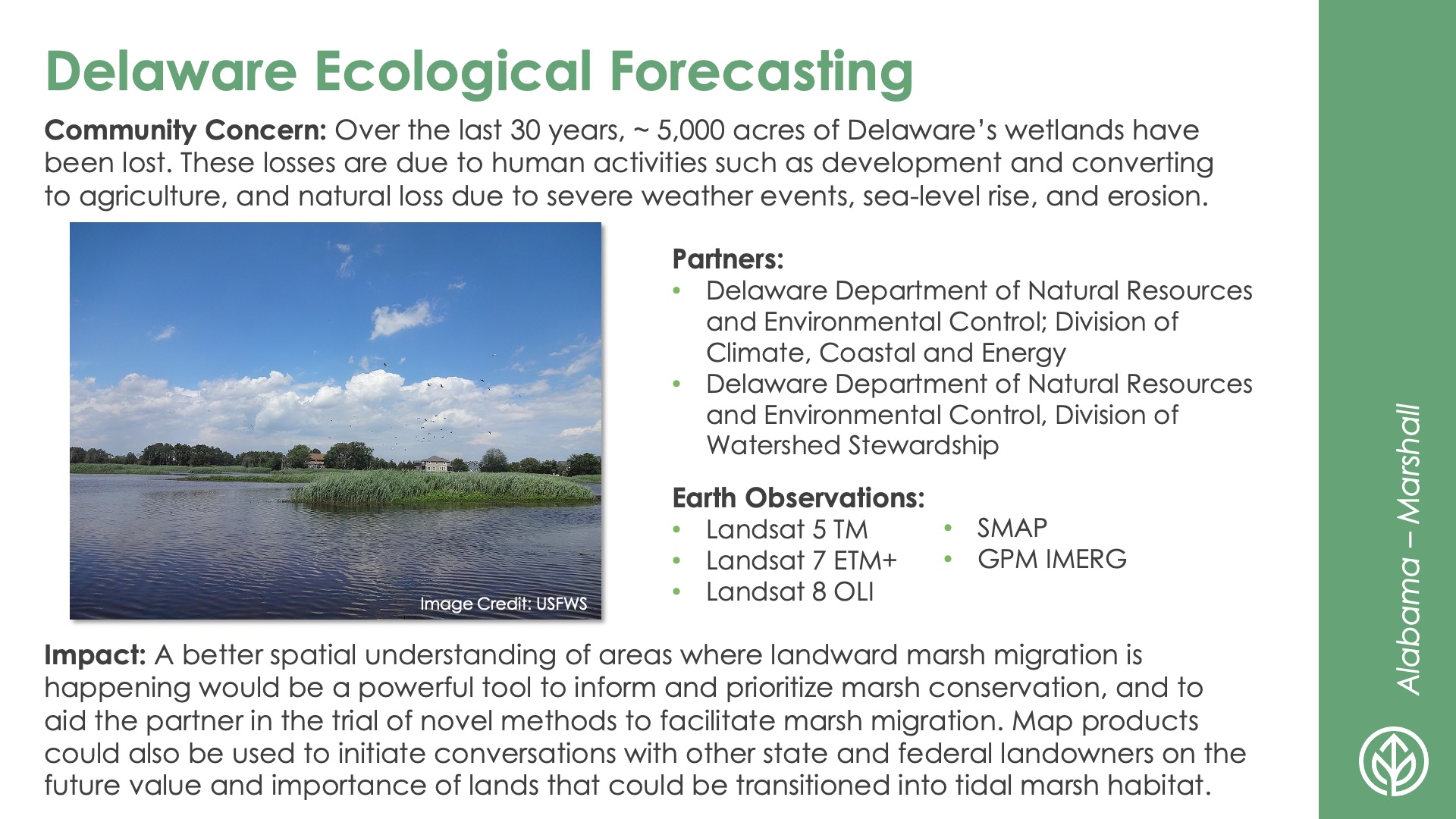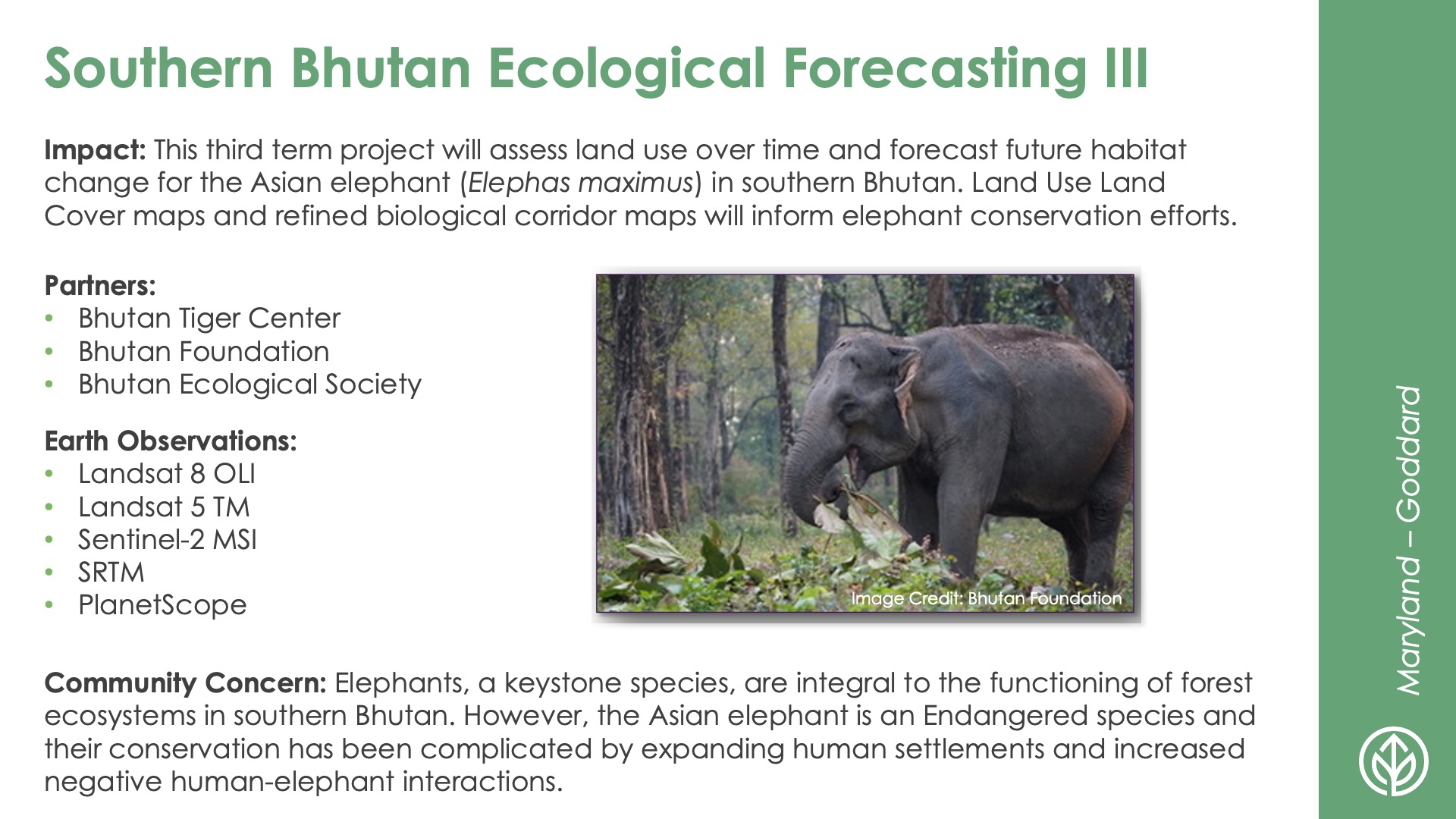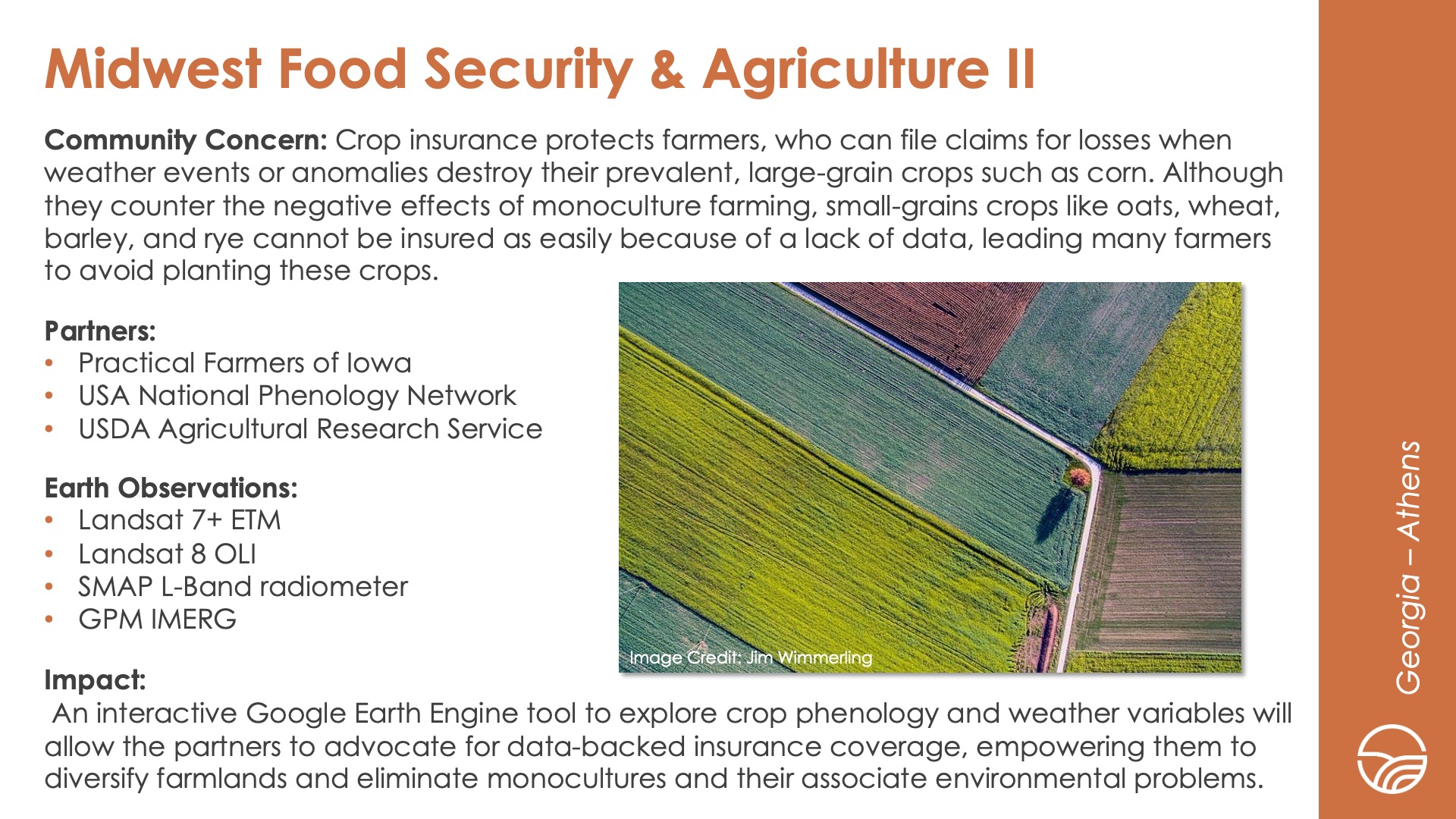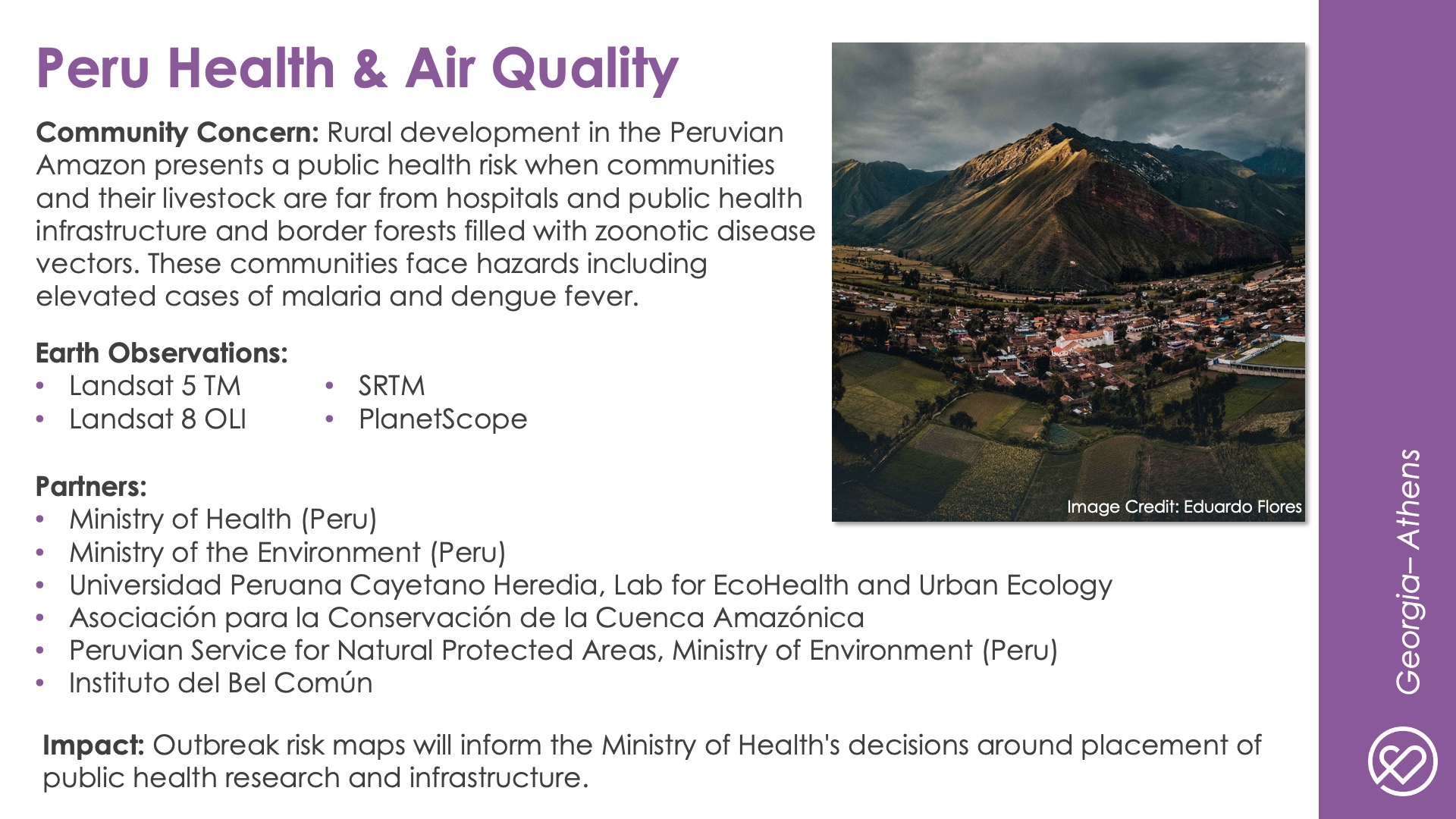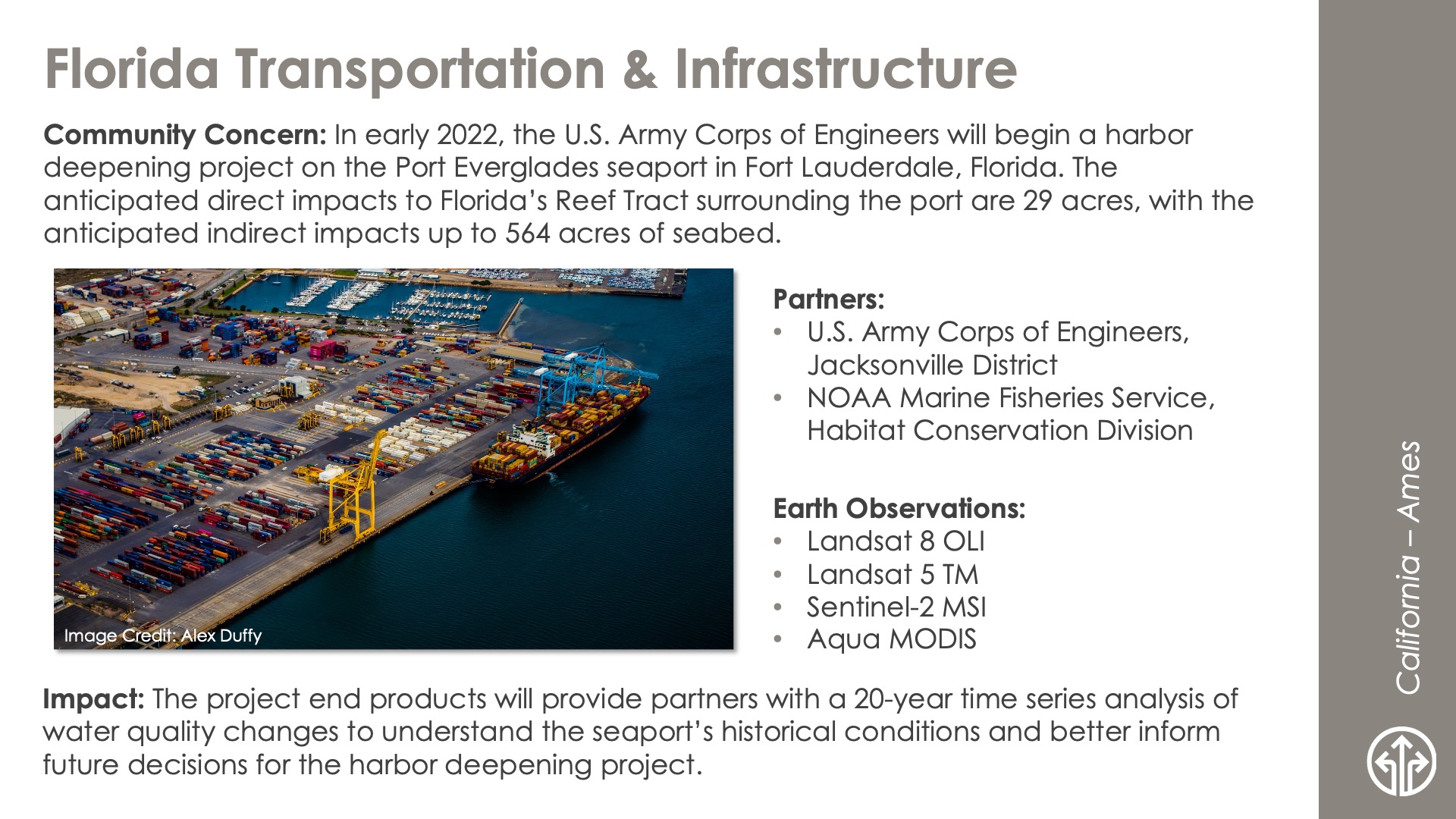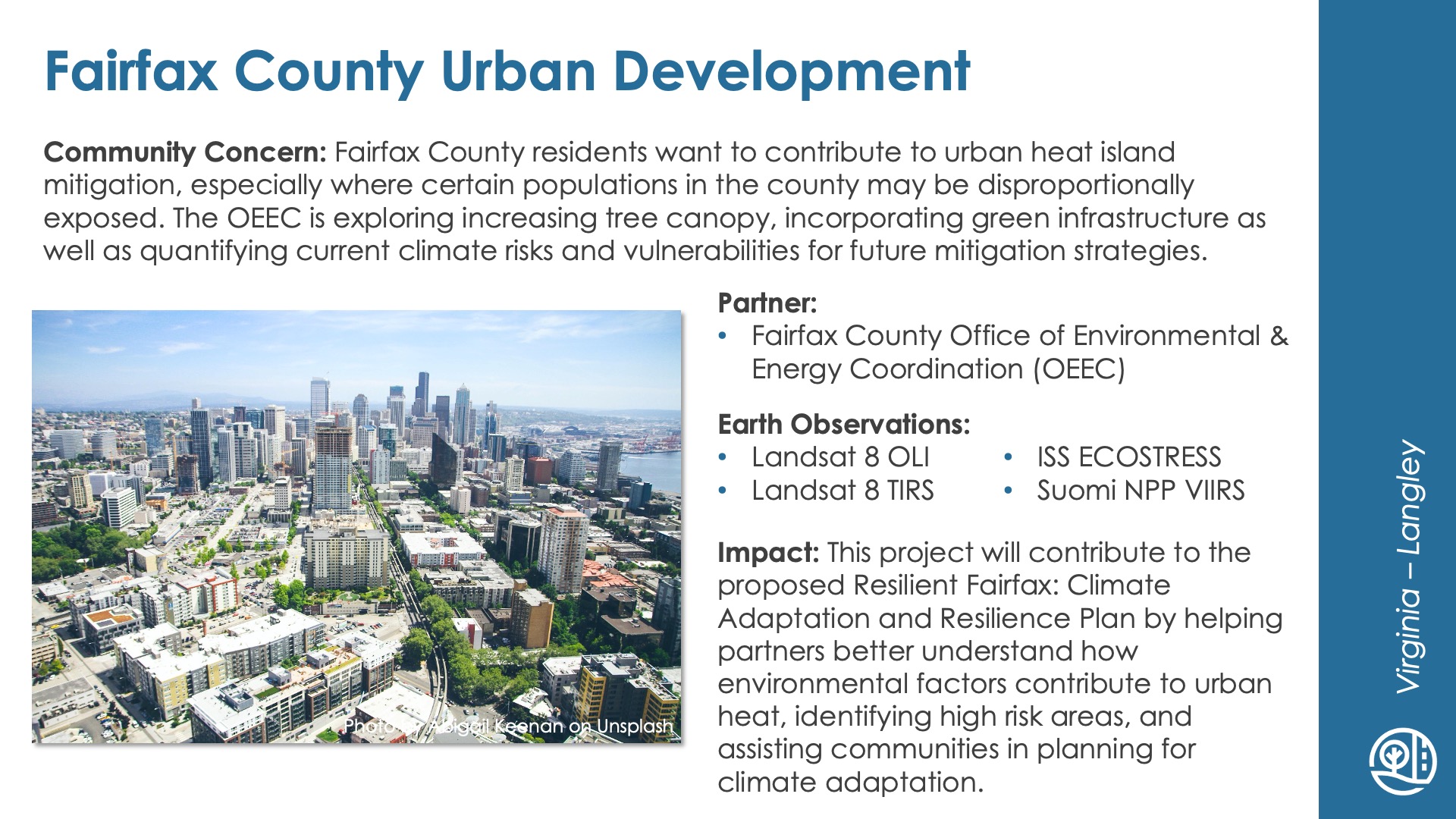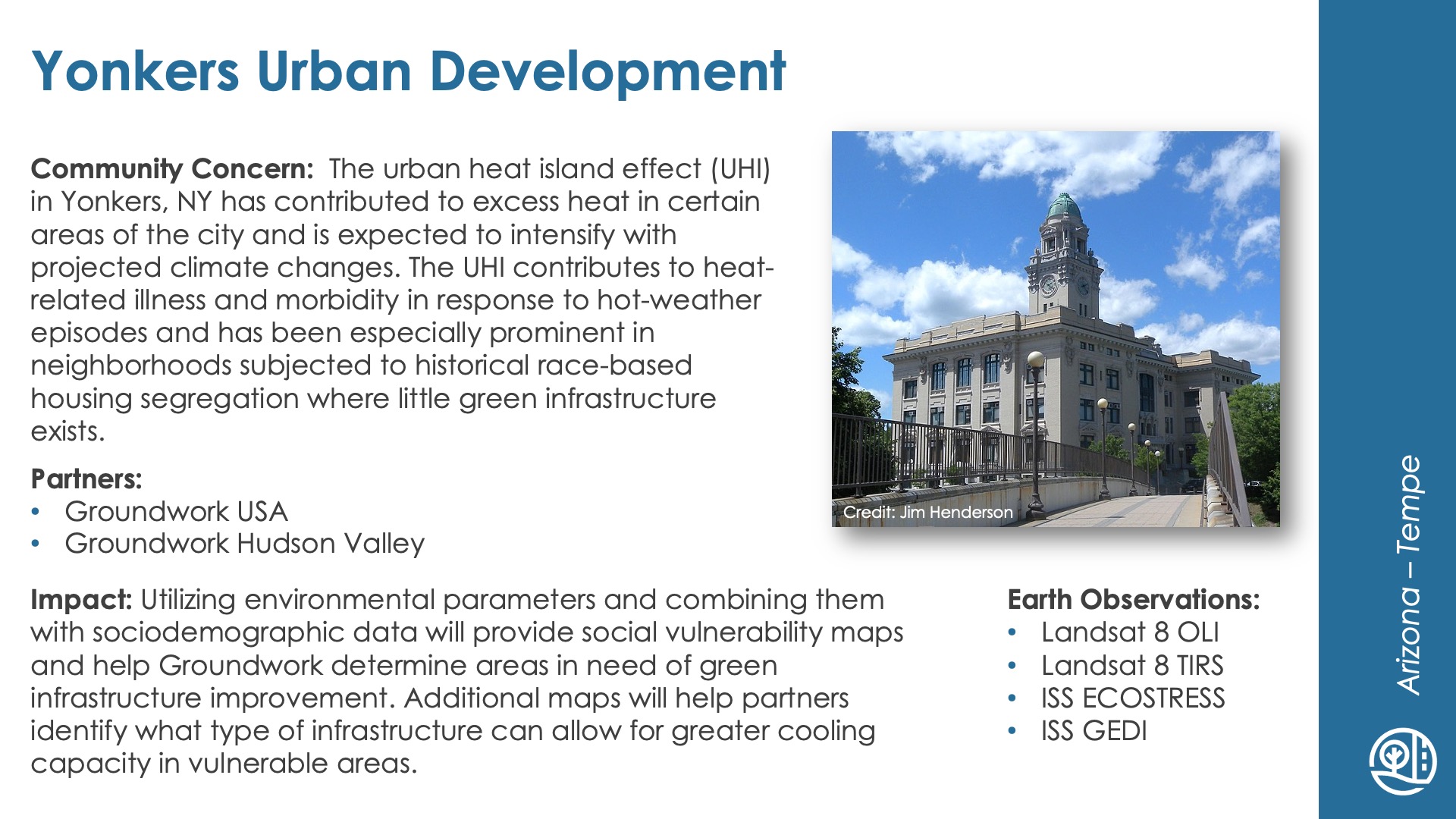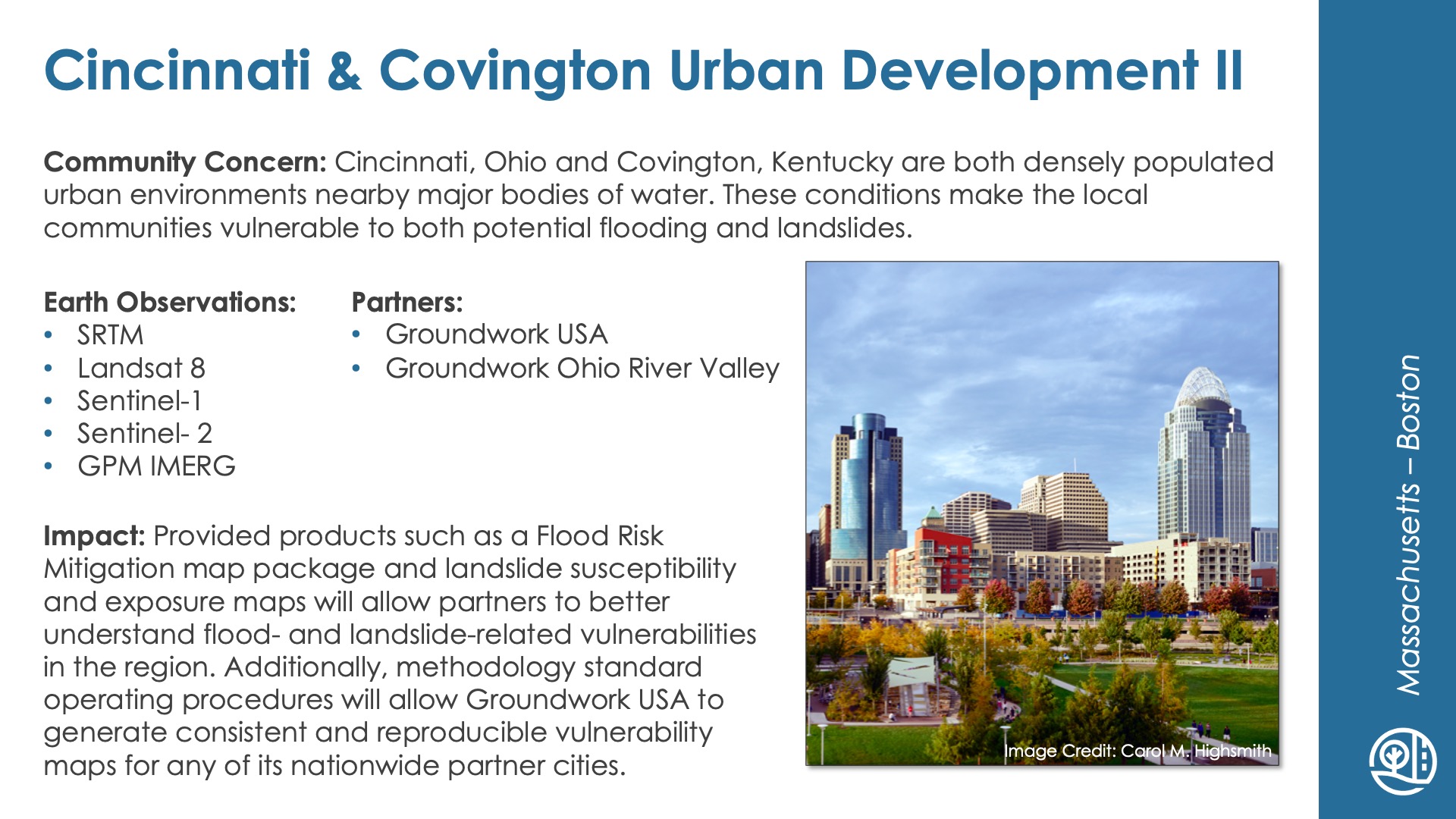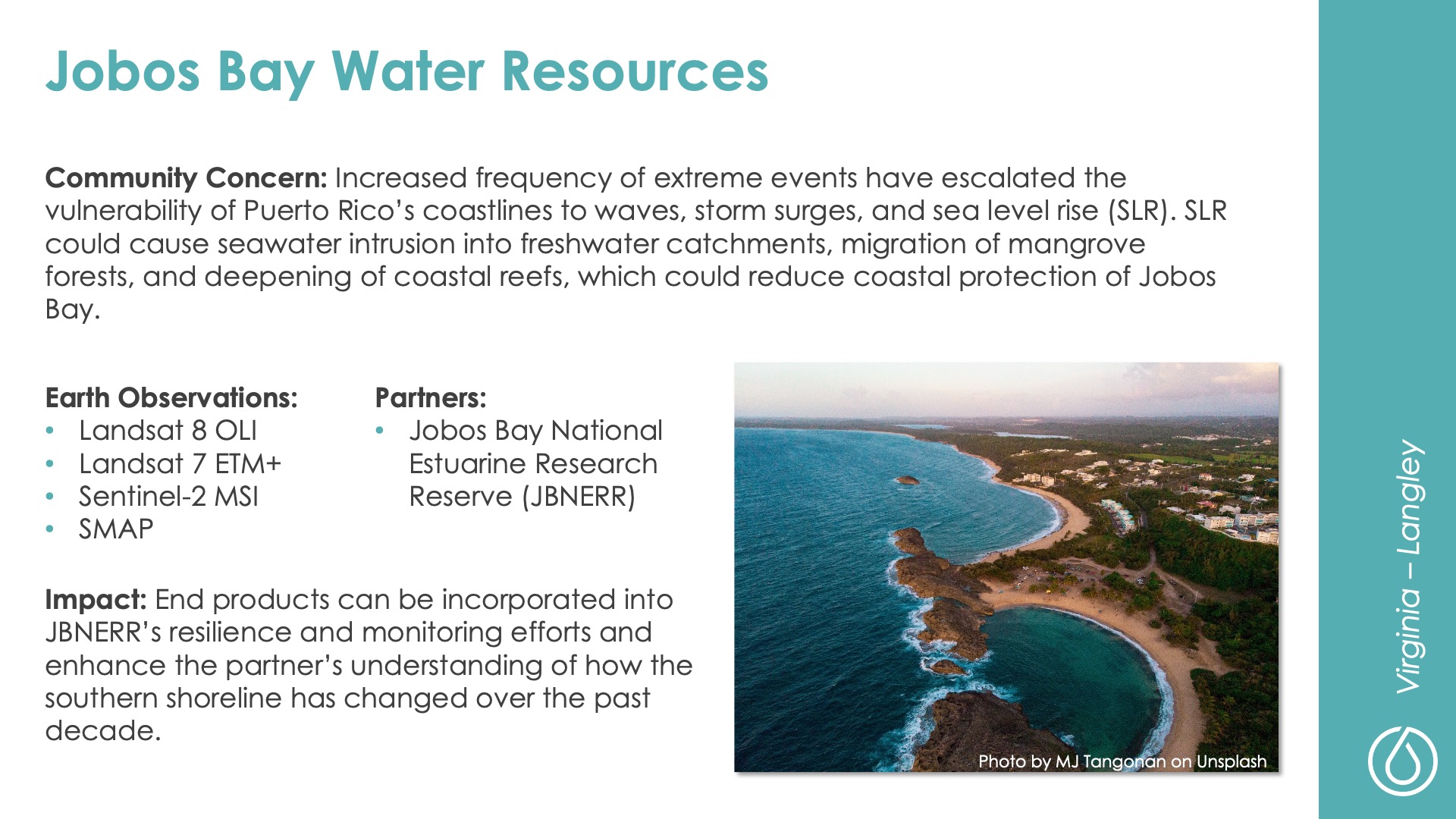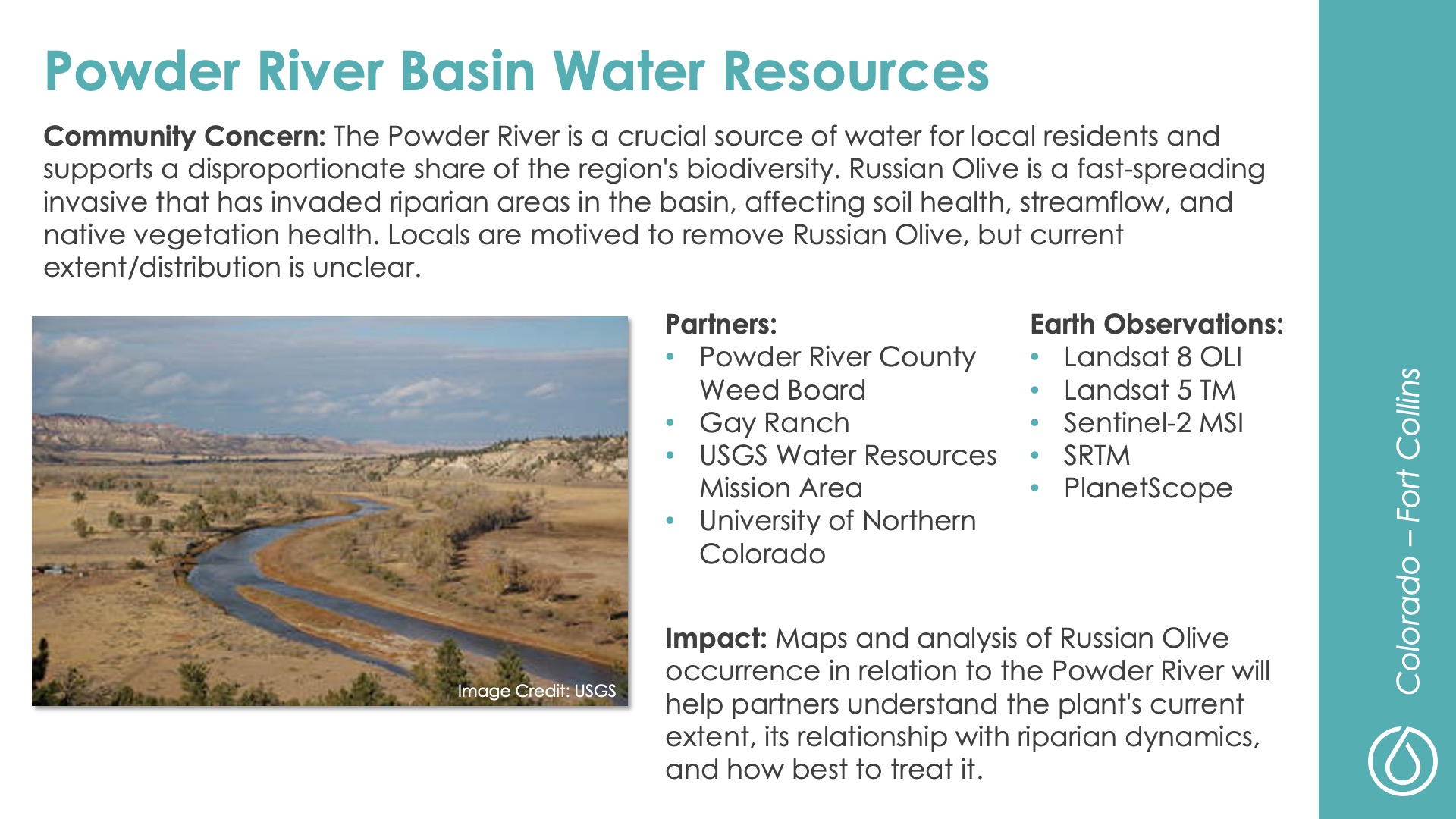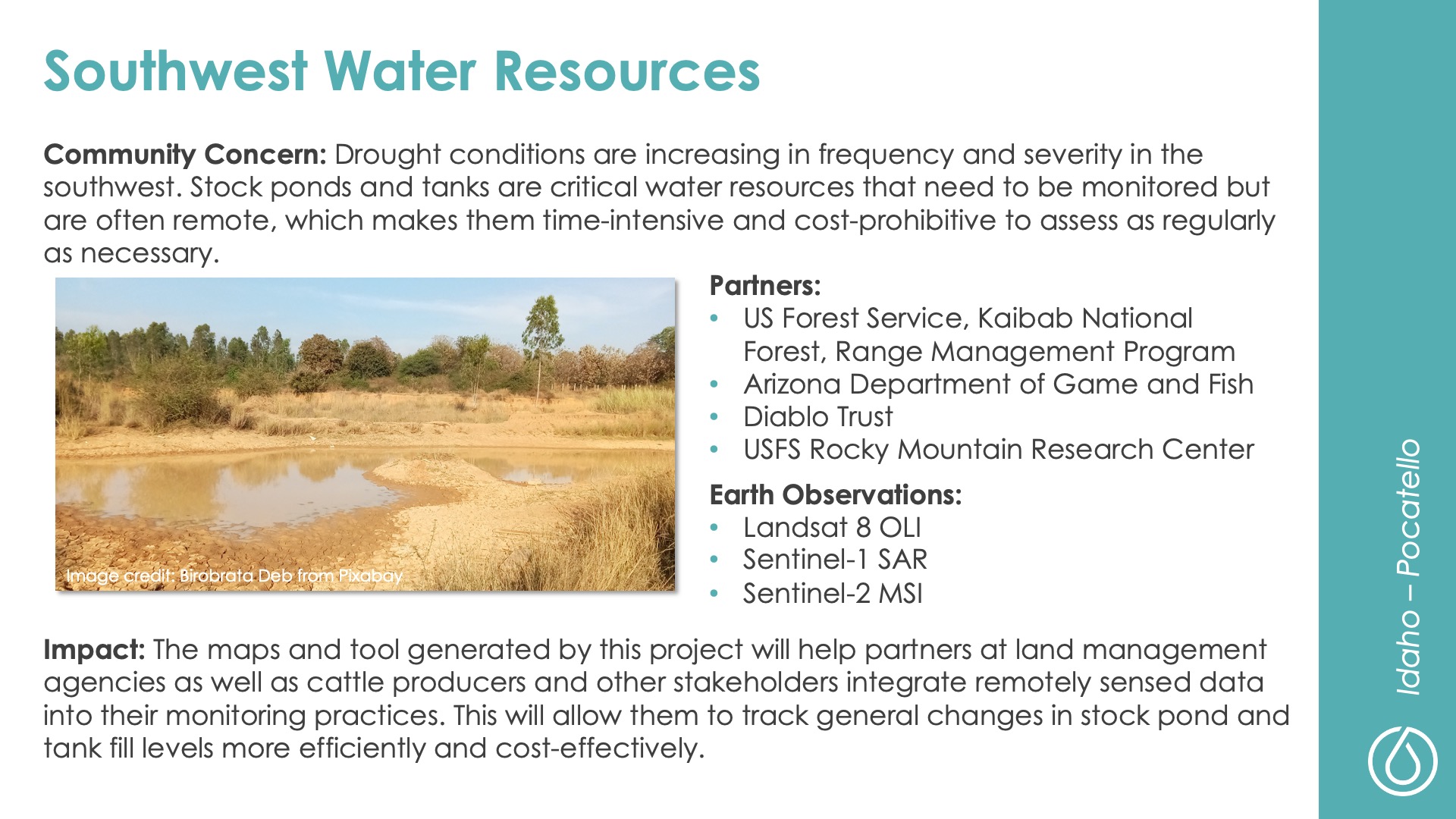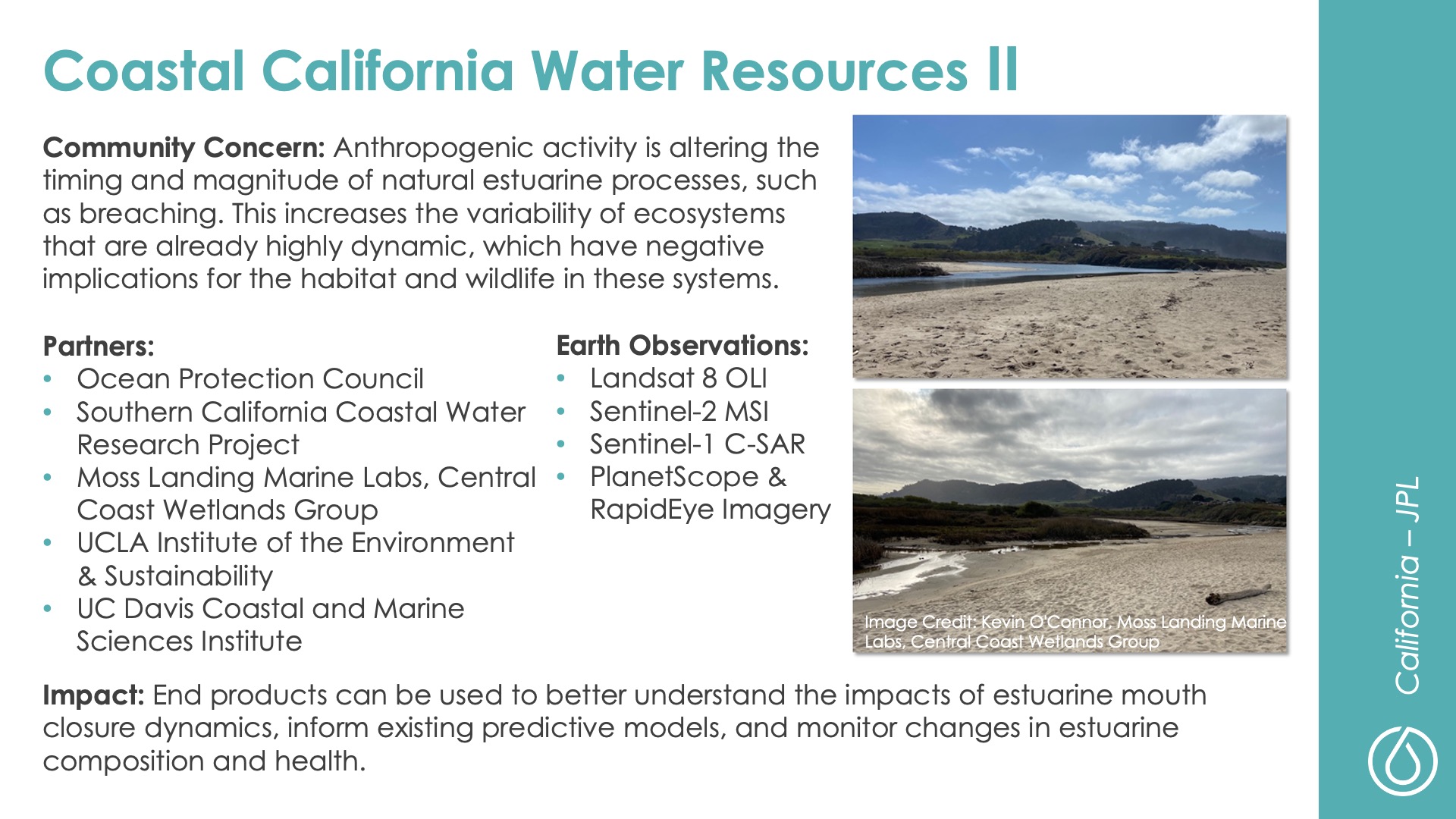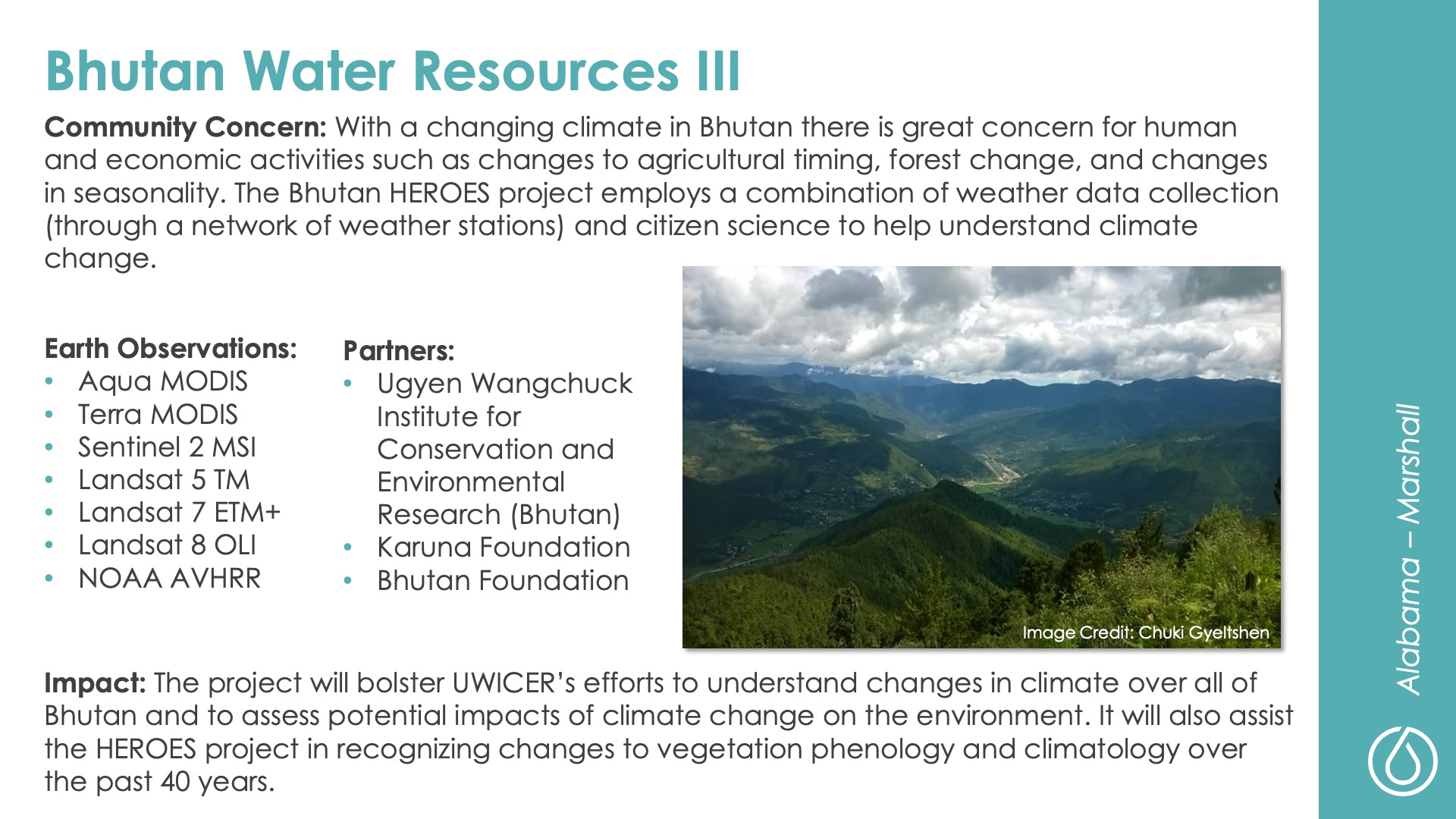Summer 2021 Preview
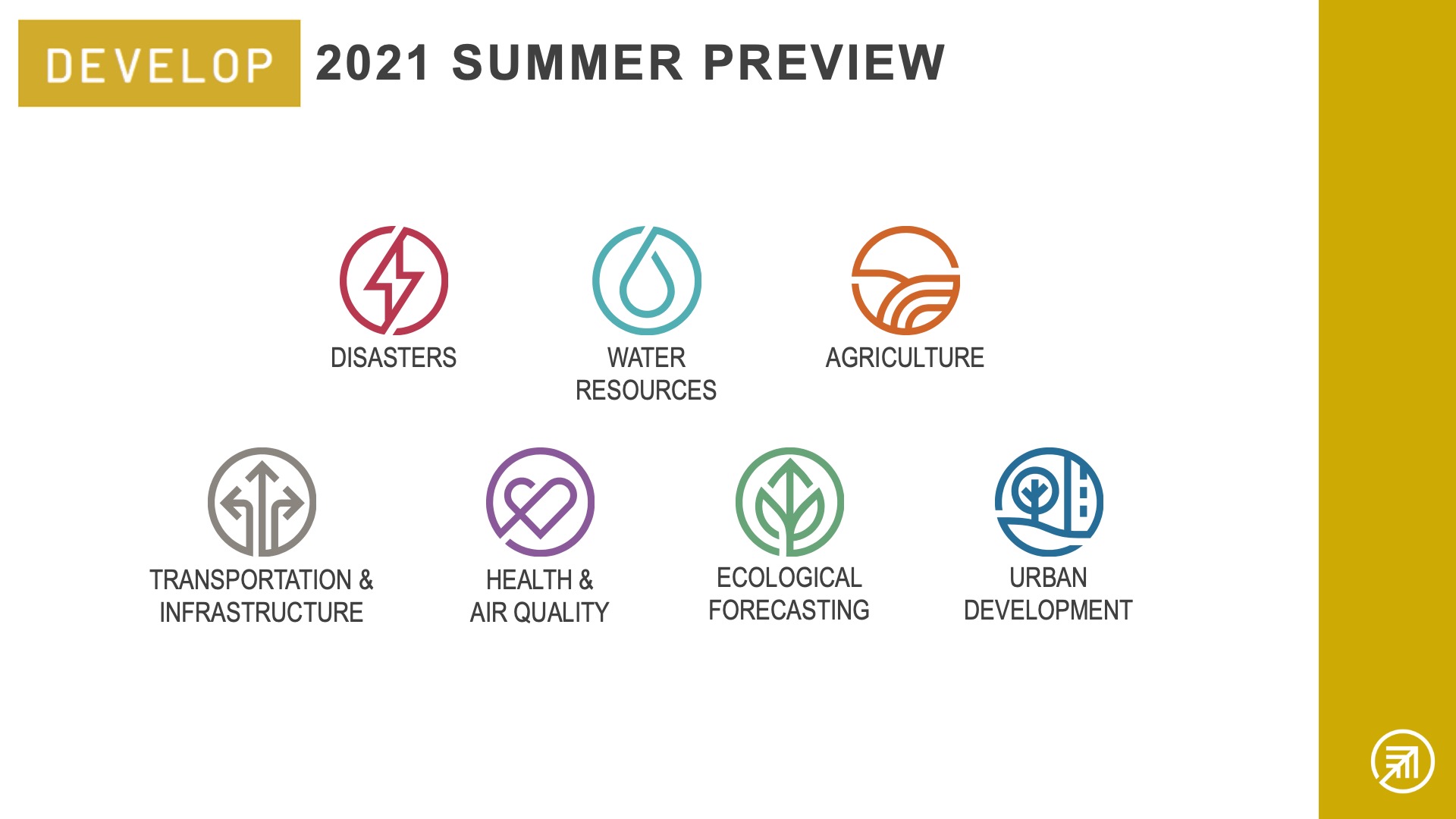
DEVELOP’s summer 2021 term began on June 7th and will conclude on August 13th. One hundred and eight participants are working virtually from 32 states and Washington, DC. The participants are working on 21 projects in the areas of Disasters, Health & Air Quality, Ecological Forecasting, Urban Development, Water Resources, Agriculture, and Transportation & Infrastructure. The tentative project impacts and partners are shown below on the summer portfolio overview. This term, eight Bhutanese scholars studying in the United States are continuing work on two DEVELOP projects studying community concerns in Bhutan through a multi-year Interagency Agreement with the U.S. Department of State.
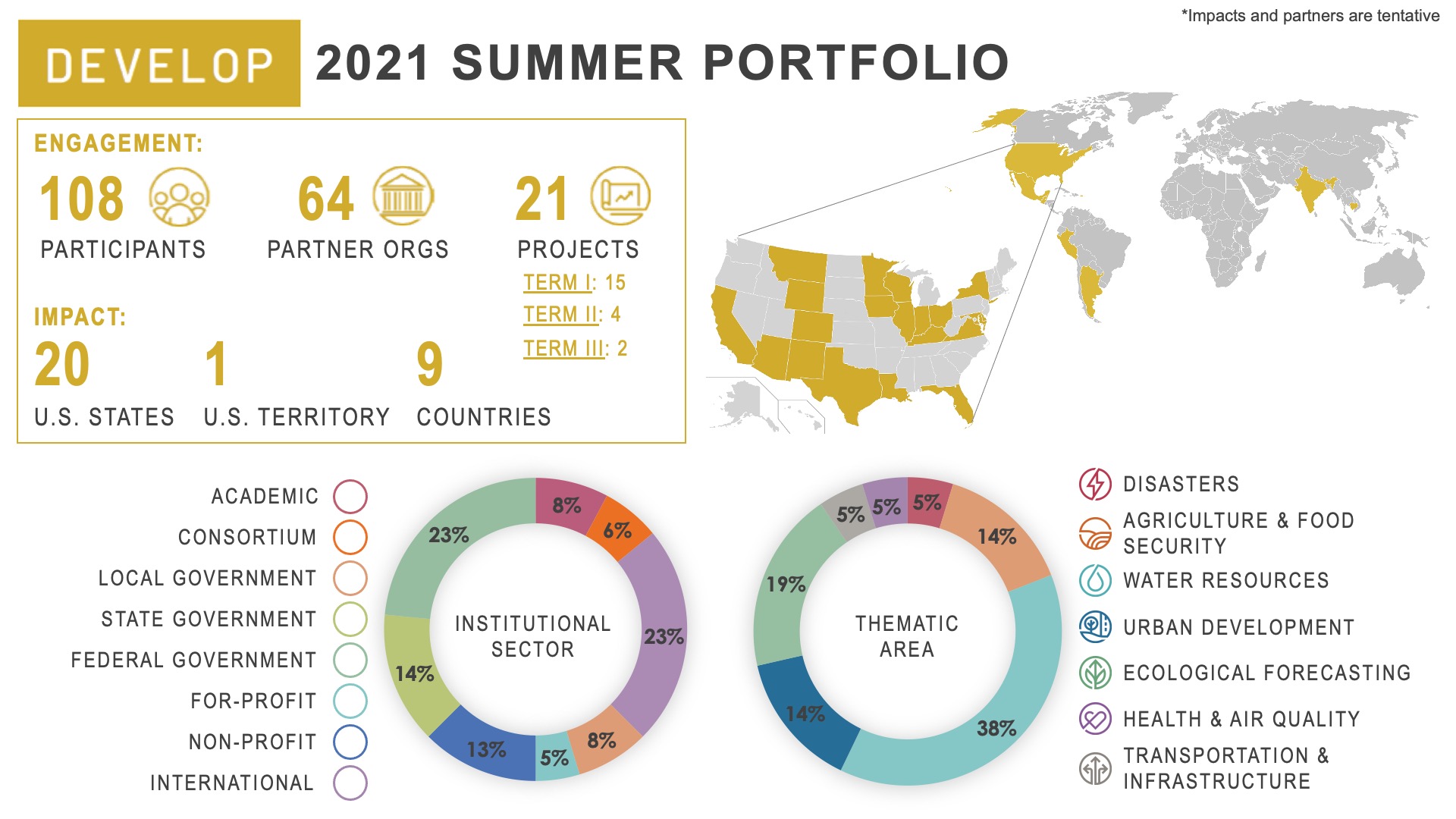
Learn more about the summer 2021 projects being conducted below!
